The tomato is undoubtedly one of the queens of the vegetable garden. Loved for its tasty and colourful fruits, it delights both amateur and experienced gardeners alike. But to hope for a good harvest in summer, it all starts with a key step: planting – or rather transplanting – young tomato plants. Whether grown from your own sowings or bought in buckets, planting them requires some method and common sense.
Discover in this guide all our practical tips for successfully planting your tomatoes, at the right time and under the best conditions.
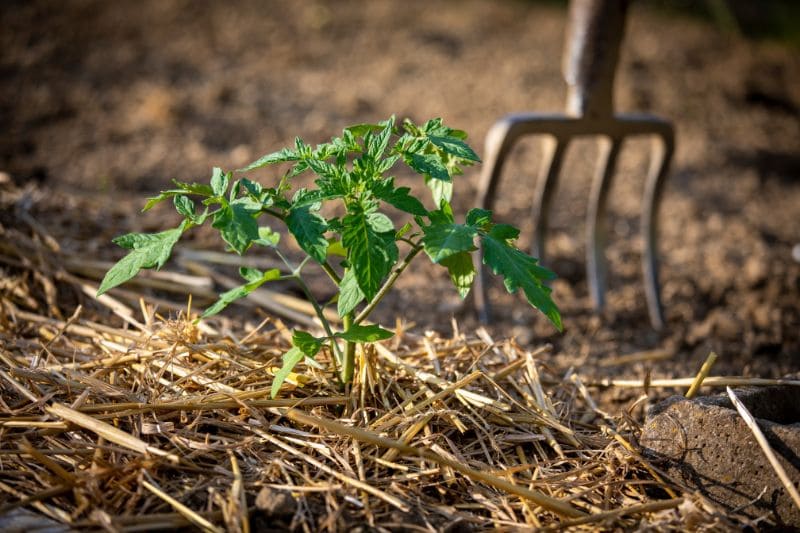
Why transplant tomatoes into open ground?
Transplanting involves moving young tomato plants to their final position in the vegetable garden. This operation allows you to:
- Provide more space: each plant has the room it needs for proper growth.
- Encourage deep rooting: deep roots ensure better nutrient absorption and better access to water.
- Limit competition: to prevent plants from hindering each other and to allow each one to fully benefit from the soil and sunlight resources.
Thus, transplanting helps to obtain vigorous plants and an abundant harvest.
When to plant tomatoes in the garden?
The ideal time to transplant your tomatoes depends on several factors: the season, weather conditions, and the growth stage of the plants.
Optimal periods for transplanting tomatoes
The right time to plant tomatoes in open ground depends primarily on temperatures. You must wait until after the last spring frosts, when the soil is sufficiently warmed, around 15°C. Depending on the region, this often corresponds to mid-May.
Transplanting too early exposes young plants to thermal stress which can hinder their growth or even cause... their decline in case of frost!
Growth stage of tomato plants
Young plants are ready to be transplanted when they have 5 to 7 well-formed leaves, indicating that the plant is robust enough to be moved.
Avoid transplanting plants that are too small or too weak, as they may struggle to adapt or fall victim to slugs.
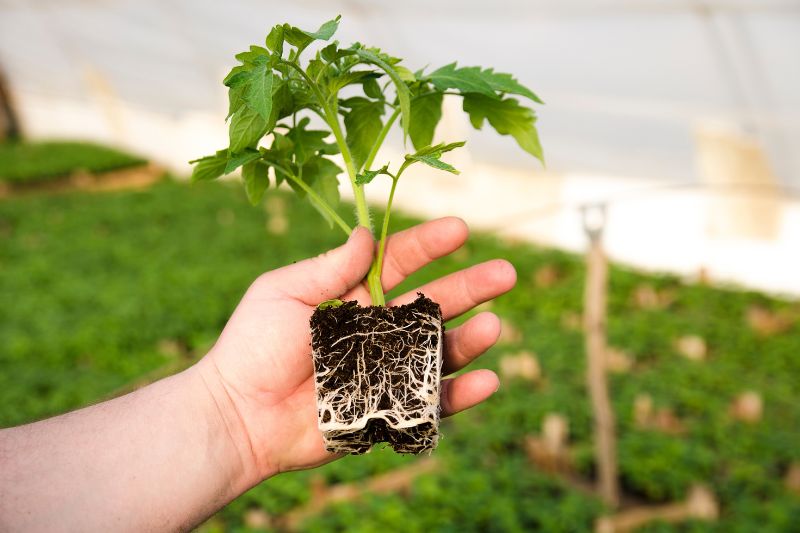
Where to plant tomatoes?
- Exposure: tomatoes appreciate a sunny position, benefiting from at least 6 to 8 hours of light per day.
- Rich and well-drained soil: choose loose, fertile, and well-drained soil. Adding well-rotted compost when preparing the soil is beneficial.
- Crop rotation: avoid planting tomatoes in the same spot as the previous year to prevent diseases, especially powdery mildew.
How to plant tomatoes in 5 simple steps
1- Prepare the soil: with a fork, loosen the soil deeply and incorporate compost to enrich it.
2- Prepare the plants: water the young plants before transplanting to facilitate removal and minimise stress.
3- Plant at the right depth: dig a hole deep enough (20 to 40 cm depending on the size of the plant) to bury the stem up to the first leaves. The tomato plant will then develop additional roots along the stem and have better access to water deep in the soil.

Tip: If your garden tends to suffer from drought in summer, you can even remove the first leaves to bury your plant even deeper.
4- Water the bottom of the hole, then place your tomato plant. Fill the hole and lightly firm the soil around the plant.
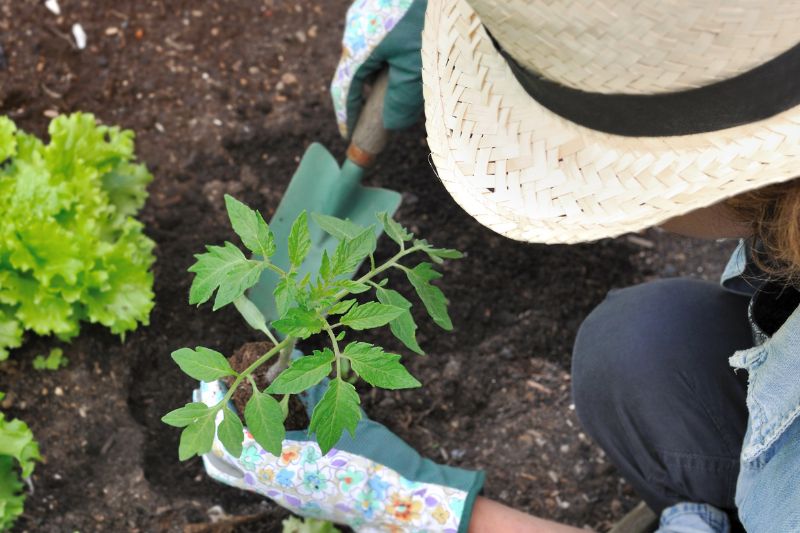
Tip: leave about 50 to 60 cm between each plant and 70 to 80 cm between rows to ensure good air circulation and reduce the risk of diseases.
5- Water generously after planting, to encourage rooting and remove air pockets. Afterwards, keep the soil slightly moist, avoiding excess water. Never wet the foliage.
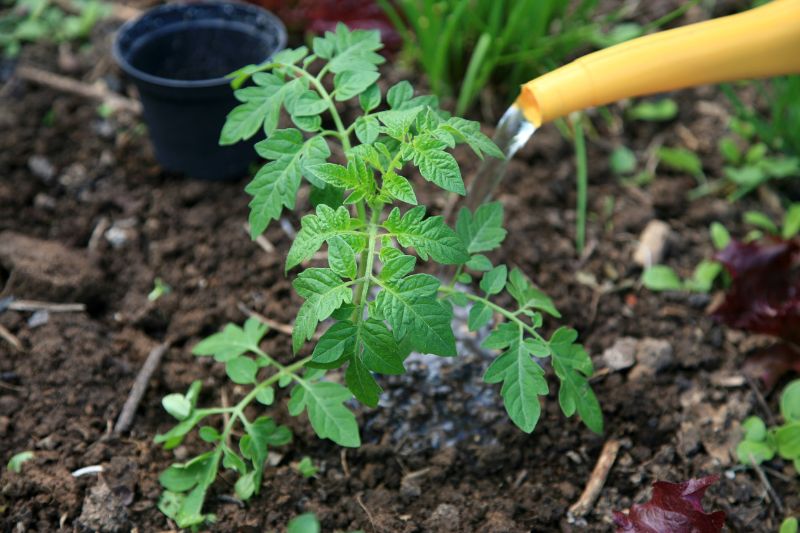
Additional tips for healthy tomatoes
- Mulching: apply an organic mulch (wood chips, hay, straw, etc.) around the base to retain moisture, protect from heat, avoid splashing during watering, and limit weeds.
- Staking: install supports at planting time to help the plants as they grow.
- Disease monitoring: inspect your plants regularly to detect any diseases or parasites and act quickly if problems arise. To learn more, read our article "Tomato: blight, other diseases and pests".































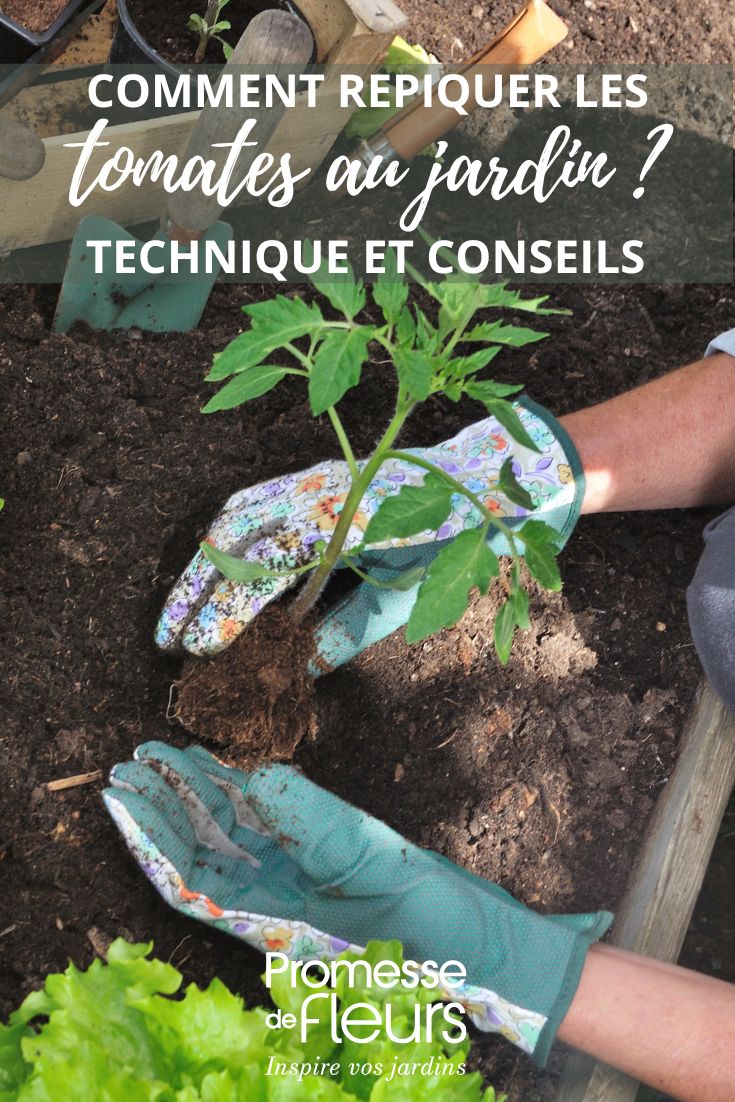
Comments